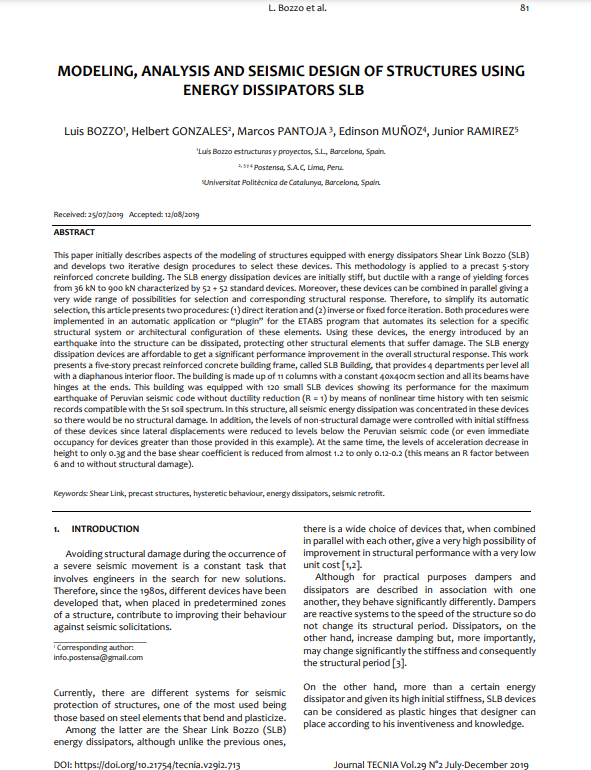Modeling, analysis and seismic design of structures using energy dissipators SLB
Licencia: Creative Commons (by)
Autor(es): Bozzo, Luis; [et al.]
This paper initially describes aspects of the modeling of structures equipped with energy dissipators Shear Link Bozzo (SLB) and develops two iterative design procedures to select these devices. This methodology is applied to a precast 5-story reinforced concrete building. The SLB energy dissipation devices are initially stiff, but ductile with a range of yielding forces from 36 kN to 900 kN characterized by 52 + 52 standard devices. Moreover, these devices can be combined in parallel giving a very wide range of possibilities for selection and corresponding structural response. Therefore, to simplify its automatic selection, this article presents two procedures: (1) direct iteration and (2) inverse or fixed force iteration. Both procedures were implemented in an automatic application or "plugin" for the ETABS program that automates its selection for a specific structural system or architectural configuration of these elements. Using these devices, the energy introduced by an earthquake into the structure can be dissipated, protecting other structural elements that suffer damage. The SLB energy dissipation devices are affordable to get a significant performance improvement in the overall structural response. This work presents a five-story precast reinforced concrete building frame, called SLB Building, that provides 4 departments per level all with a diaphanous interior floor. The building is made up of 11 columns with a constant 40x40cm section and all its beams have hinges at the ends. This building was equipped with 120 small SLB devices showing its performance for the maximum earthquake of Peruvian seismic code without ductility reduction (R = 1) by means of nonlinear time history with ten seismic records compatible with the S1 soil spectrum. In this structure, all seismic energy dissipation was concentrated in these devices so there would be no structural damage.
[Lima: 2019]
Compartir:
Una vez que el usuario haya visto al menos un documento, este fragmento será visible.


